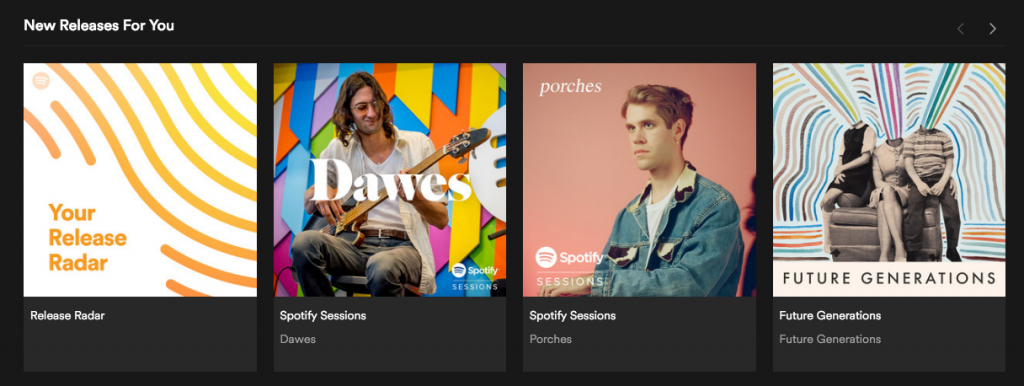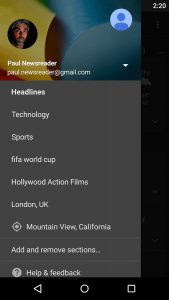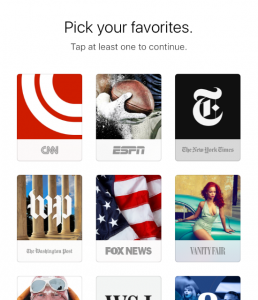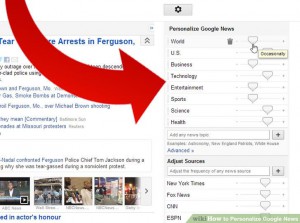Personalized and customized content has been shown to deliver more dynamic experiences, more user engagement, higher conversion rates, and better customer satisfaction.
So how should you go about gearing site content to your different user segments? There are two routes you can take: personalization or customization. Both methods tailor the content and features of your site to suit the needs of different users (so that, depending on their characteristics, users will see different content on the ‘same’ page).
But personalization and customization are not interchangeable, and there are big differences between the two that is important to keep in mind when you’re deciding which route to take. In this post, we’ll look at the differences between personalization and customization, and help you figure out which approach is right for your site.
Personalization

Personalization delivers different content to different user segments automatically, and it puts control in the hands of the computer or system being used.
There are two main types of personalization: role-based and individual customization. For this post, we’ll focus on individualized personalization (but feel free to read up on role-based personalization here).
With individualized personalization the computer or system is programmed to create a profile of each individual site visitor, based on things like the user’s purchase history or recent searches. The computer uses this information to tailor site content or features to that particular users’ interests.
No doubt you’ve come across individualized personalization countless times in your own online adventures. Targeted ads are a good example of individualized personalization, as are Amazon.com’s purchase suggestions, Netflix’s recommended shows, or your Spotify and Pandora playlists.
Customization
Like personalization, customization delivers site content that’s tailored to particular users’ interests and needs. But in contrast to personalization, the user does the work, rather than the computer.

Customization puts control in the hands of users by letting them explicitly choose what kind of content or features they want to see. A customized system will enable users to make changes to their experience themselves, by tweaking the content they see, or changing a page’s layout, for example.
News apps, such as BBC’s Android app and Google News, are good examples of successful customization. They let users decide what kind of news stories they want to see by selecting from a range of topics, and allows them to move items around the interface to prioritize certain features and types of content.
The Pros and Cons
Personalization and customization are both useful tools. Used well, they can improve the way your users experience and interact with your site. But each one works better for different situations, and there are some general pros and cons to each approach:
Personalization Pros
- Personalization doesn’t require any extra effort on the part of the user, since the system adjusts content according to user needs
- Good personalization will seamlessly provide users with content that matches their interests, which tends to boost engagement and conversion rates
- Personalization helps filter out irrelevant content, so it tends to deliver a better user experience than an un-personalized site
Personalization Cons
- It raises questions of user privacy. Some users find personalization unnerving, and feel uncomfortable with the idea of a computer (or business) ‘knowing’ so much about them – especially if the targeted content is too personal or too spot on
- It can be hard to achieve a personalization system that really successfully delivers relevant content to users – if you miss the mark, you risk providing users with irrelevant content that will detract from, rather than enhance, the user’s experience.
Customization Pros
 Apple News customization interface
Apple News customization interface
- Customization can enhance user experiences by letting site visitors decide exactly what they want to see – so you’ll end up delivering exactly the content they want
- The same users who find personalization creepy might prefer customization, because it allows them to see relevant content, but keeps them firmly in control of their interaction with your site
Customization Cons
 Google News customization, via WikiHow
Google News customization, via WikiHow
- Customization requires a lot of work on the part of the user, so it has a much higher transaction cost than personalization – users have to put in the time to set their preferences, personalize their experience, and filter through irrelevant content themselves.
- While customization is great for providing users with exactly what they want, that becomes problematic if your users don’t actually know what they want or what they’re looking for when they land on your site
- Too much customization can also provide different users with vastly different experiences when using your site or app.
So which one is right for your site?
The best choice for you depends on your site’s goals and the service you provide – there’s no one size fits all approach to customizing or personalizing your site.
But in general, personalization is the right approach to take if your site provides users with a large variety of information, content, or product choices that they’ll have to wade through to find what they need.
Because personalization relies on artificial intelligence about users and user groups, it works wonders when your users don’t know exactly what they’re looking for. In this case, personalization is your best friend. By programming your site to filter through the noise and provide users with relevant content, you’ll end up with a far better user experience.
Personalization is also a good fit if you do a lot of targeted email marketing, or if you’re in the e-commerce game. If you rely on organic search to get site traffic, personalization is also useful, since delivering relevant content to users tends to encourage them to linger on sites for longer, and it can even boost your search engine ranking.

An example of personalization from Amazon
On the other hand, you’ll want to consider taking the customization route if you know that your users come to your site knowing what they’re looking for.
Let’s say you run a news site, or a blog with a wide range of topics, or an interactive online service that gets regular repeat visitors: letting your users define their own interests and filter their own content is a great option.
Customization is also a good option if your site handles any sensitive or personal information. In that context, giving people greater control over their experience – and avoiding the discomfort that can come along with personalization – is a good idea.
Wrap Up
Filtering your website content and features to be relevant to different users will measurably improve your engagement and conversions.
There are two main approaches that you can take to tailoring your site content: personalization or customization. There are pros and cons for both, but at the end of the day, it’s your site’s goals and function that’ll determine which approach is right for you.
